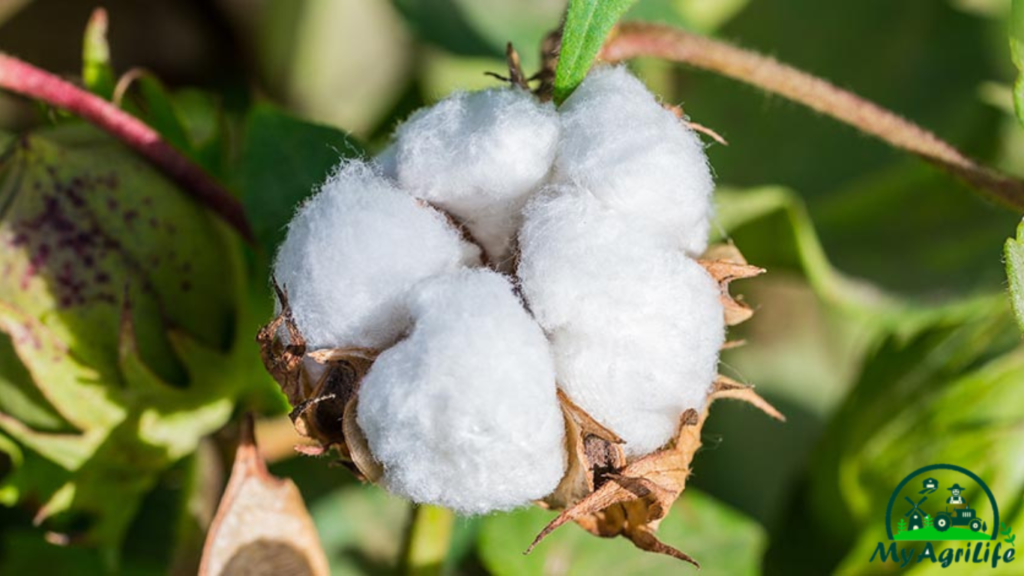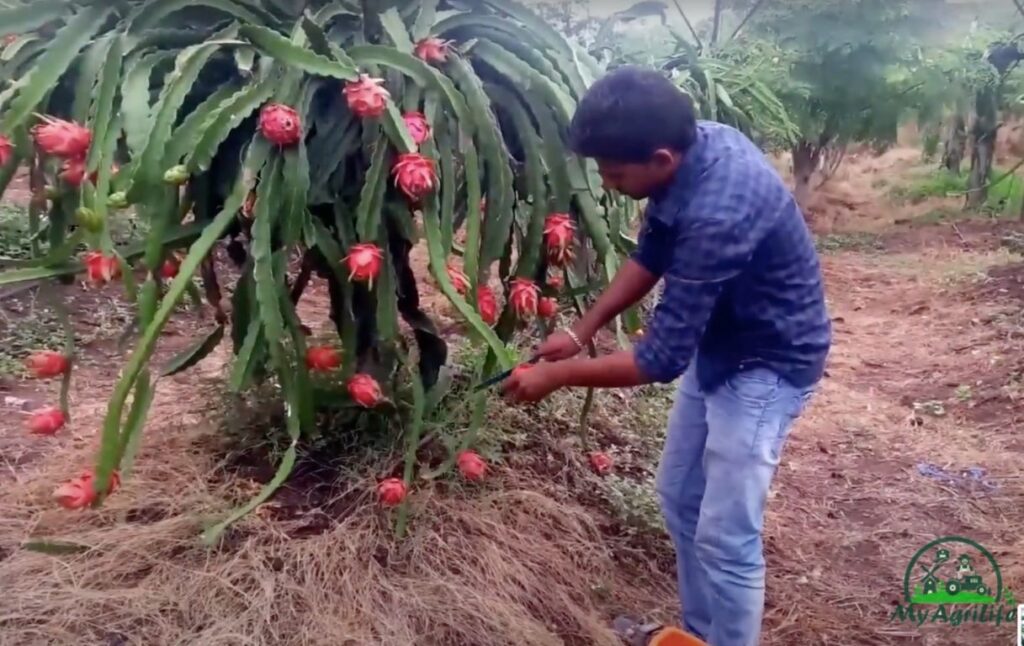
Brinjal (Solanum melongena), also known as eggplant, aubergine or baingan, is a vegetable that belongs to the nightshade family. It is native to India and is widely cultivated and consumed in many parts of the world.
Brinjal comes in various shapes, sizes, and colors, ranging from small and round to long and slender, and from purple to green, white, and even yellow. It has a smooth, glossy skin and a fleshy interior that is creamy white to yellowish in color, with small edible seeds.
Brinjal is a rich source of dietary fiber, vitamins, and minerals such as potassium, magnesium, and calcium. It also contains antioxidants and phytonutrients that help protect against various diseases and disorders.
In Indian cuisine, brinjal is used in a variety of dishes, including curries, stir-fries, and chutneys. It is also used in Middle Eastern, Mediterranean, and Southeast Asian cuisines. Some popular dishes made with brinjal include baingan bharta, moussaka, ratatouille, and baba ganoush.
Seed Specification Brinjal
The seed specifications for brinjal (Solanum melongena) can vary depending on the variety and supplier. However, here are some general guidelines for seed specifications:
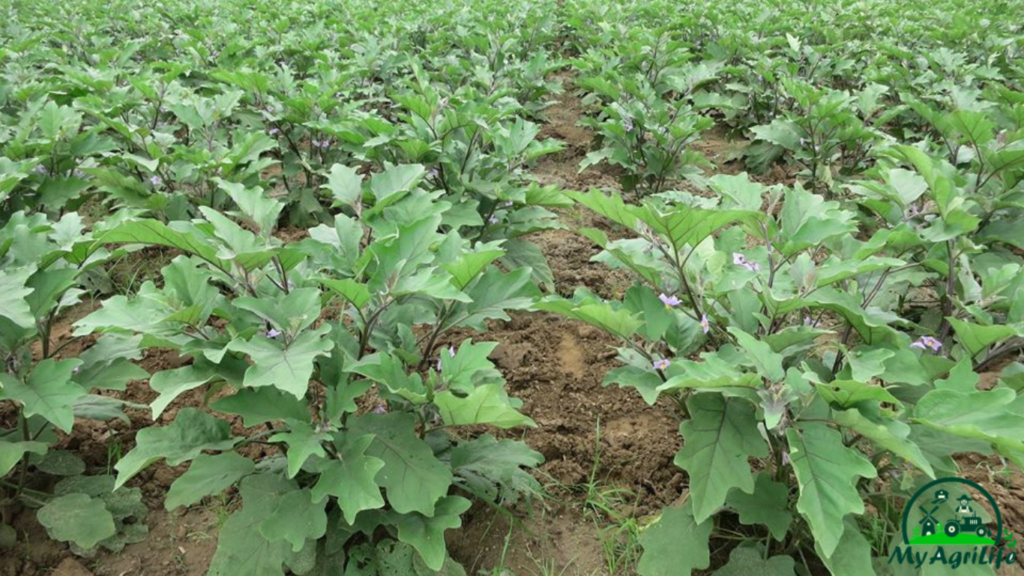
1.Seed size: Brinjal seeds are generally small, oval-shaped, and flat. The average seed size is about 2-3 mm in length and 1-2 mm in width.
2.Seed color: Brinjal seeds are typically black or dark brown in color. The color can vary slightly depending on the variety.
3.Germination rate: The germination rate of brinjal seeds can vary between 60% to 80%, depending on the variety and storage conditions. Fresh seeds generally have a higher germination rate than old seeds.
4.Seed vigor: Vigorous seeds are those that germinate quickly and produce strong seedlings. Brinjal seeds with high vigor will produce healthy plants that are more resistant to disease and environmental stress.
5.Purity: High-quality brinjal seeds should be free of debris, dirt, and other plant matter. The seeds should also be free from other crop seeds and weeds.
6.Seed treatment: Some brinjal seeds may be treated with fungicides or insecticides to protect against diseases and pests. It is important to follow the instructions on the seed packet or consult with the supplier to ensure safe and effective use.
Land Preparation & Soil Health Brinjal
Land preparation and soil health are crucial factors for growing healthy brinjal plants and achieving a good yield. Here are some guidelines for land preparation and soil health for brinjal cultivation:
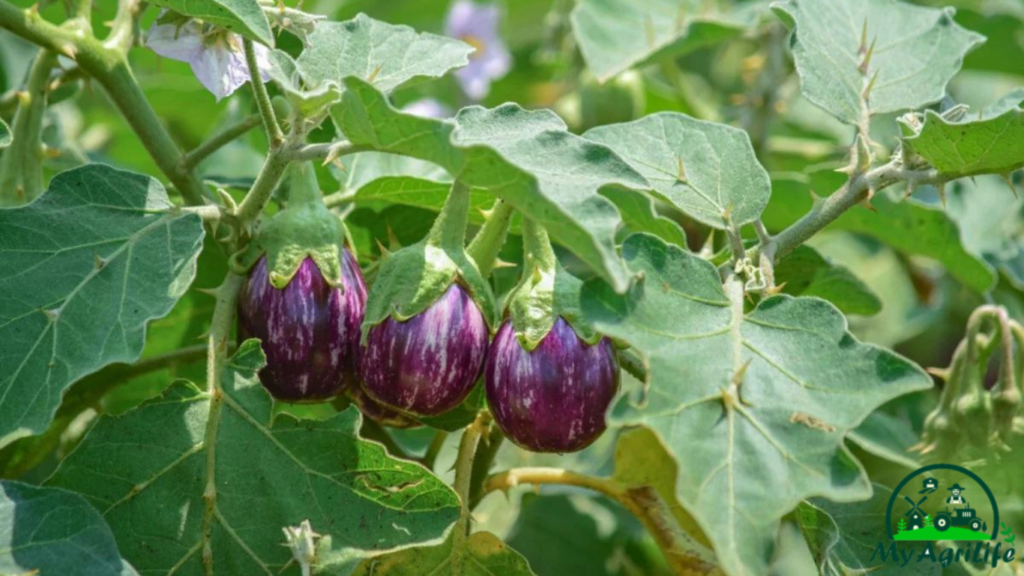
1.Soil type: Brinjal can grow in a wide range of soil types, but it prefers well-drained soils that are rich in organic matter. Sandy loam or loamy soil with a pH of 5.5 to 6.8 is ideal for brinjal cultivation.
2.Land preparation: Land preparation for brinjal cultivation should begin by plowing or digging the land to a depth of 15-20 cm. After plowing, the soil should be leveled and then harrowed to break up any clumps of soil.
3.Soil testing: Before planting, it is important to test the soil for nutrient content and pH levels. Based on the results of the soil test, appropriate fertilizers and soil amendments can be added to the soil to improve its fertility and pH.
4.Organic matter: Brinjal plants benefit from the addition of organic matter to the soil. Compost or well-rotted farmyard manure can be added to the soil to improve its organic matter content, which will help retain moisture and nutrients in the soil.
5.Mulching: Mulching can help to conserve soil moisture and control weeds. Organic materials such as straw, hay, or leaves can be used as mulch around the base of the brinjal plants.
6.Crop rotation: Brinjal plants should not be grown in the same soil year after year, as this can lead to the build-up of pests and diseases in the soil. It is important to rotate crops to maintain soil health and prevent pest and disease problems.
By following these guidelines for land preparation and soil health, you can help ensure that your brinjal plants have a healthy growing environment and produce a good yield.
Crop Spray & fertilizer Specification Brinjal
Crop spray and fertilizer specifications for brinjal (Solanum melongena) can vary depending on the stage of growth, soil fertility, and pest and disease pressure. However, here are some general guidelines for crop spray and fertilizer specifications:
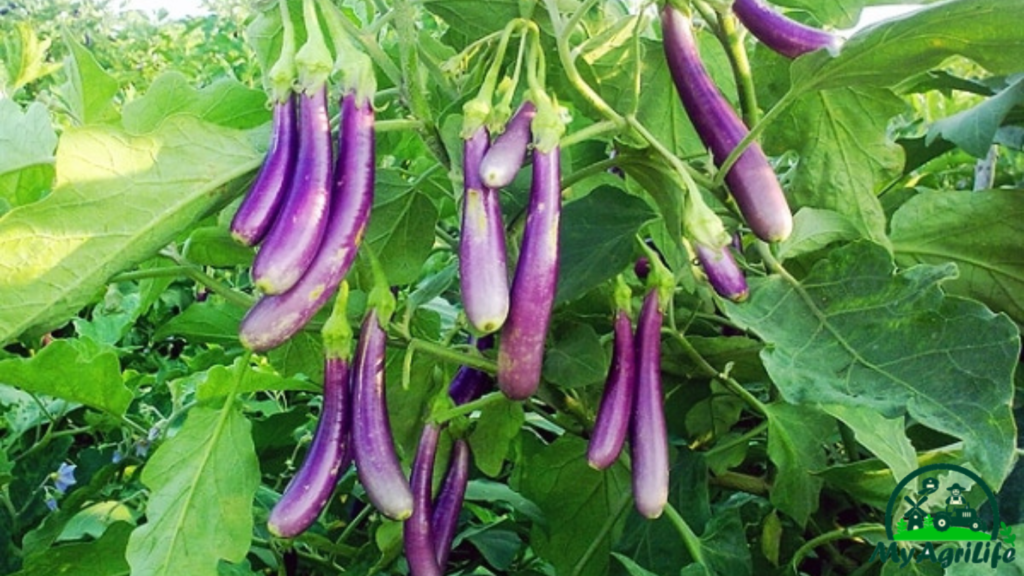
1.Fertilizer: Brinjal plants require a balanced fertilizer that contains nitrogen, phosphorus, and potassium. The recommended NPK ratio for brinjal is 50:100:50 kg/ha. Depending on the soil test results, additional fertilizers such as micronutrients can be added. Fertilizers can be applied in split doses throughout the growing season, starting with a basal dose at planting time.
2.Organic Fertilizer: Organic fertilizers such as cow dung, vermicompost, and poultry manure can also be used to supplement the soil’s nutrient content. These can be applied before planting and as a top dressing during the growing season.
3.Foliar spray: Foliar sprays are used to supplement the plant’s nutrient needs and protect against pests and diseases. For brinjal plants, foliar sprays can include potassium nitrate, calcium nitrate, and micronutrient solutions. These sprays can be applied at regular intervals, starting from the vegetative stage and continuing until the fruiting stage.
4.Pest and Disease Control: Brinjal plants are susceptible to various pests and diseases, including fruit borers, spider mites, and bacterial wilt. Pesticides and fungicides can be used to control these problems. The type and frequency of application will depend on the severity of the pest and disease pressure. It is important to follow the instructions on the label and take safety precautions when applying these chemicals.
5.Timing: The timing of fertilizer and crop spray application is crucial for brinjal cultivation. Fertilizers should be applied at the recommended rates and in split doses throughout the growing season. Crop sprays should be applied at regular intervals, starting from the vegetative stage and continuing until the fruiting stage.
By following these guidelines for crop spray and fertilizer specifications, you can help ensure that your brinjal plants have the nutrients they need to grow healthy and produce a good yield. It is important to always follow safe handling and application practices when using fertilizers and crop sprays.
Weeding & Irrigation Brinjal
Weeding and irrigation are important factors to consider for brinjal cultivation to ensure healthy growth and optimal yield. Here are some guidelines for weeding and irrigation for brinjal:

1.Weeding: Weeds can compete with brinjal plants for nutrients, water, and light, which can reduce yield and plant growth. Weeding should be done regularly, especially during the early stages of growth. Hand weeding is the most effective method for controlling weeds around the base of the brinjal plants. Alternatively, a shallow hoeing can be done to control weeds in between the rows of plants.
2.Mulching: Mulching can help to suppress weed growth and conserve soil moisture. Organic materials such as straw, hay, or leaves can be used as mulch around the base of the brinjal plants. The mulch should be spread to a depth of 5-7 cm around the plants to prevent weed growth.
3.Irrigation: Brinjal plants require regular irrigation to maintain soil moisture levels. The frequency and amount of irrigation will depend on the soil type, temperature, and humidity. Irrigation should be done early in the morning or in the late afternoon to avoid water loss due to evaporation. Overwatering should be avoided, as it can lead to root rot and other diseases.
4.Drip Irrigation: Drip irrigation is an efficient method of irrigating brinjal plants. It delivers water directly to the root zone, which reduces water loss due to evaporation and minimizes weed growth. Drip irrigation also helps to prevent waterlogging, which can lead to root rot.
5.Irrigation during flowering: Brinjal plants require adequate water during the flowering stage to ensure optimal fruit set. It is important to maintain soil moisture levels during this stage, especially in areas with hot and dry weather conditions.
By following these guidelines for weeding and irrigation, you can help ensure that your brinjal plants have a healthy growing environment and produce a good yield.
Harvesting & Storage Brinjal
Harvesting and storage are critical stages in the brinjal cultivation process. Here are some guidelines for harvesting and storage of brinjal:
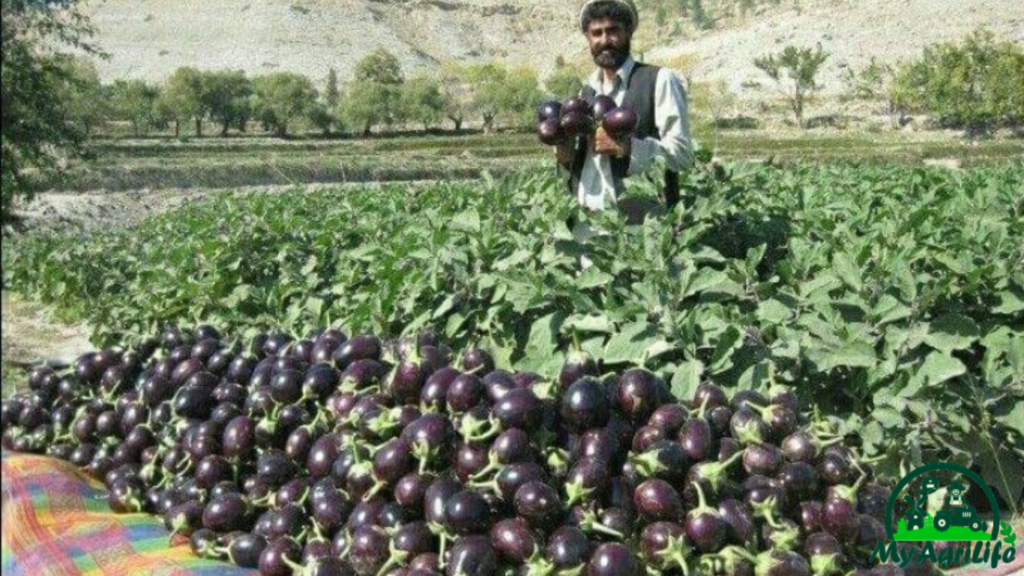
1.Harvesting: Brinjal fruits should be harvested when they are fully mature, shiny, and firm. The optimal time for harvesting is usually 65 to 70 days after transplanting. Brinjal fruits are usually harvested by cutting the stem with a sharp knife or scissors. Care should be taken not to damage the plant or the fruit during harvesting. It is also important to avoid harvesting brinjal fruits during rainy or humid weather conditions, as this can lead to fungal infections.
2.Storage: Brinjal fruits are highly perishable and require proper storage to maintain their quality and freshness. The ideal storage temperature for brinjal is between 10 to 12°C, with a relative humidity of 90-95%. If stored at room temperature, brinjal fruits can only last for a few days. It is important to avoid storing brinjal fruits with fruits that emit ethylene gas, such as apples and bananas, as this can lead to premature ripening and spoilage.
3.Handling: Brinjal fruits are delicate and should be handled with care during harvesting, packing, and transportation. Bruising or damage to the fruit can reduce its quality and shelf life. It is important to avoid stacking or piling brinjal fruits on top of each other during storage and transportation.
4.Sorting and Grading: Brinjal fruits should be sorted and graded according to their size, shape, and color. Uniformity in size, shape, and color can increase the marketability and value of the brinjal fruits.
By following these guidelines for harvesting and storage, you can help ensure that your brinjal fruits are of high quality and have a longer shelf life, which can increase their marketability and value.
conclusion
In conclusion, brinjal farming can be a profitable and rewarding venture if proper care and attention are given to the various stages of cultivation. From land preparation and soil health to crop spray and fertilizer specification, weeding, and irrigation, every stage is critical to ensure optimal growth and yield. Additionally, harvesting and storage are also important factors that can affect the quality and value of the final product. By following the guidelines outlined in each stage of brinjal farming, farmers can increase their chances of success and maximize their profits. Overall, brinjal farming requires patience, hard work, and attention to detail, but the end result can be a bountiful harvest and a profitable business.








